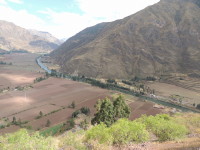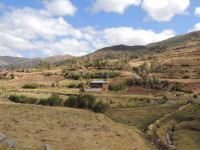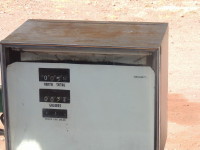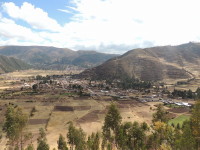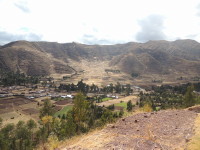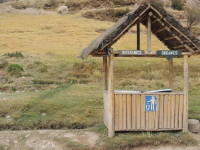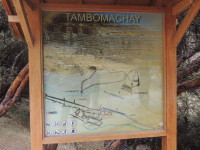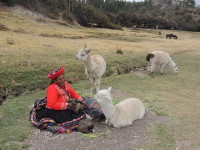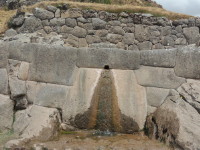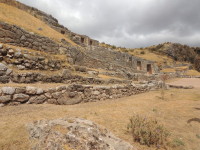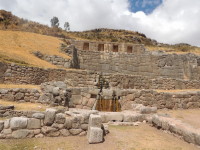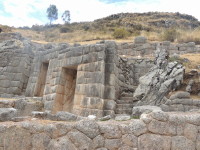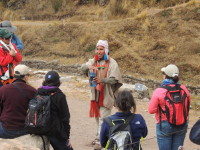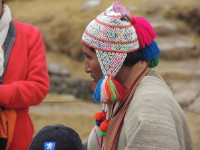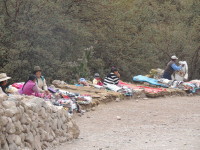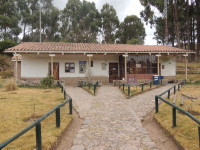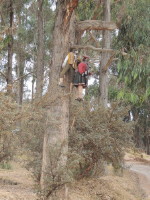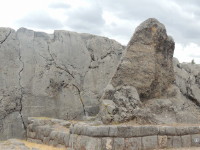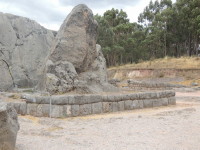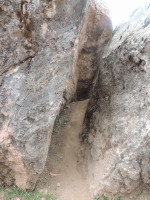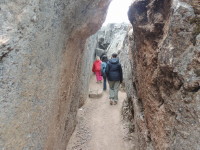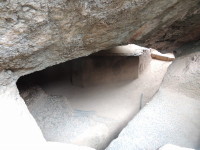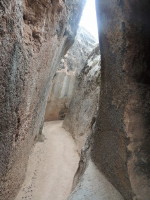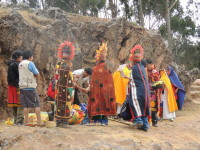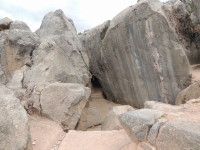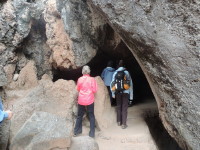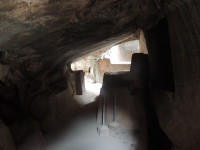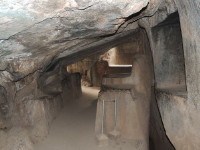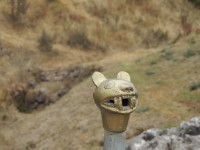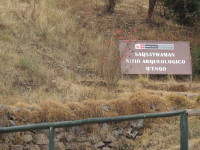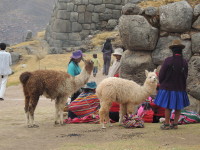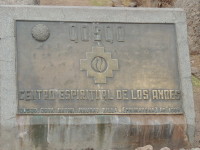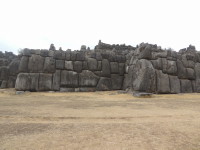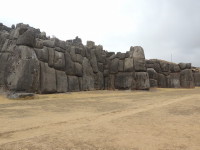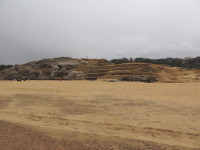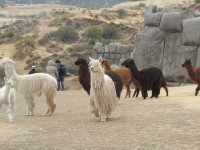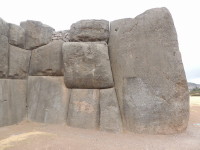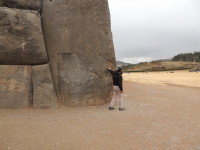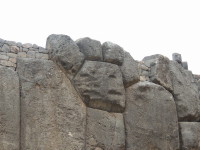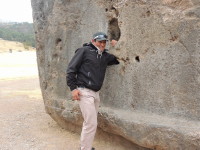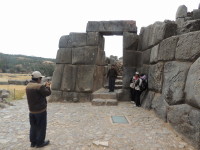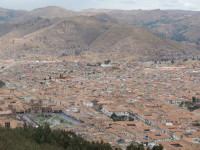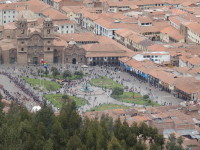Cusco Ruins
Three Inca sites on the outskirts of Cusco that we visited include Tambomachay, Qenqo, and Sacsayhuamán.
Tambomachay or "Bath of the Incas" consists of a series of aqueducts, canals and waterfalls that run through three tiered platforms. It is not known how the Inca used the site. It may have been a site for ritual bathing for the Inca nobility and/or a military and communication outpost guarding the approaches to Cusco.
Qenqo is one of the largest huacas (holy places) in the Cusco region. It is a unique temple in its construction, having been entirely carved out of a gigantic monolith. Many huacas were based on naturally occurring rock formations. In Quechua, Qenqo means labyrinth or zigzag and the temple is named for the serpentine canal cut out of its rock. How the Inca used the site is unknown. Researchers speculate Qenqo was a temple where death rituals took place.
Identified as a temple, ceremonial center, imperial residence, astronomical observatory and a fortress, Sacsayhuamán was built overlooking Cusco on top of a mountain where tradition says the guardian spirits of the Inca lived. It was built to showcase Inca power and majesty. This archeological treasure is formed by three massive, parallel stone walls zigzagging together for some 600m (1,968 ft) across the plateau just over the other side of the mountain top from Cusco city and the valley below. The complex is made of the most monumental and gargantuan stones precisely configured, sculpted and carved to fit together tightly without mortar. Some stones are up to 20 ft high and weigh nearly 200 tons. Many of the stones used to construct the walls were designed in such a way that their interlocking shapes formed figures representing animals, plants and people. Following the siege of Cusco, in an act of domination, the Spaniards used Sacsayhuamán as a source of stones for building Spanish Cusco and within a few years the complex was virtually demolished. Today, only the largest stones remain at the site.
Scroll to the bottom of the page for pictures.
Cusco History:
Lake Titicaca is the birthplace of the Inca civilization (1100 AD) while Cusco, founded by the first Inca King Manco Capac and Mama Occlo around 1200 AD, is the birthplace of the powerful Inca Empire (1300-1500 AD) known by the Incas as “Tahuantinsuyo” or “land of four quarters” because of the way the land was divided into four suyos or administrative regions. The four suyos were: Chinchasuyo (North), Antisuyo (East; the Amazon), Collasuyo (South) and Contisuyo (West).
The Inca Empire stretched north to south some 2,500 miles along the Andean mountain ranges from Colombia to Chile and reached west to east from the Atacama dry coastal desert to the Amazon rainforest. At the height of its reign the Inca Empire was the largest nation on Earth with an estimated population of between 12 and 15 million people and remains the largest native state to have existed in the western hemisphere. Cusco (Quechua: Qosq'o) was the capital of the Inca Empire, center of Inca religious and political power and home of its leaders.
Pachakutiq, the ninth Inca leader (1438-1470), is credited with building the Cusco area and constructing nearly all the major Inca monuments nearby including Pisac, Ollantaytambo, and Machu Picchu. He designed the Cusco area into the shape of a puma, a sacred animal, in profile: Sacsayhuamán is the head; the heart of the puma was Huakaypata, a ceremonial square in the city of Cusco; Qorikancha, the sun temple, the side; the tail, Pumachupan (lower part of Cusco), is formed by the junction of the city's two main rivers (Huatanay and Tullumayo).
Cusco was unrivalled by any other South American city by the time the Spanish conquistadors invaded Peru in 1532. It had magnificent stonework architecture and abundant wealth in the form of gold and silver. In 1533, the Spanish invaded Cusco. Soon after, they brutally defeated the Inca. Throughout years of conflict and Spanish colonization Inca lost their lives in battle and to smallpox, brought to South America by the Spanish. What remains of the Inca legacy is limited, as the conquistadors plundered what they could of Inca treasures and tore down structures built by the Inca. In an act of domination, the Spanish destroyed plazas, buildings, temples and royal palaces, confiscating and melting into bars the gold and silver for shipping to Spain. They used the remaining massive stone walls built by the Inca as foundations for the construction of colonial buildings. The construction of the Spanish Convent of Santo Domingo directly over Qorikancha is an example. Likewise, the Huakaypata was converted into the Plaza de Armas with the Cathedral constructed to dominate the colonial square. Cusco became the center for the Spanish colonization and spread of Christianity in the Andean world.
Peruvian independence was first declared in 1821 but it was not until 1823 that it gained absolute independence. The Cusco region's archeological importance first gained renown after the excavation of Machu Picchu in 1911 by Hiram Bingham. The 'discovery' of Machu Picchu transformed Cusco from a remote colonial city in the Andes into one of Peru’s leading tourist destinations.
Click on image for slideshow and captions
Continue to Amazon Rainforest >>



